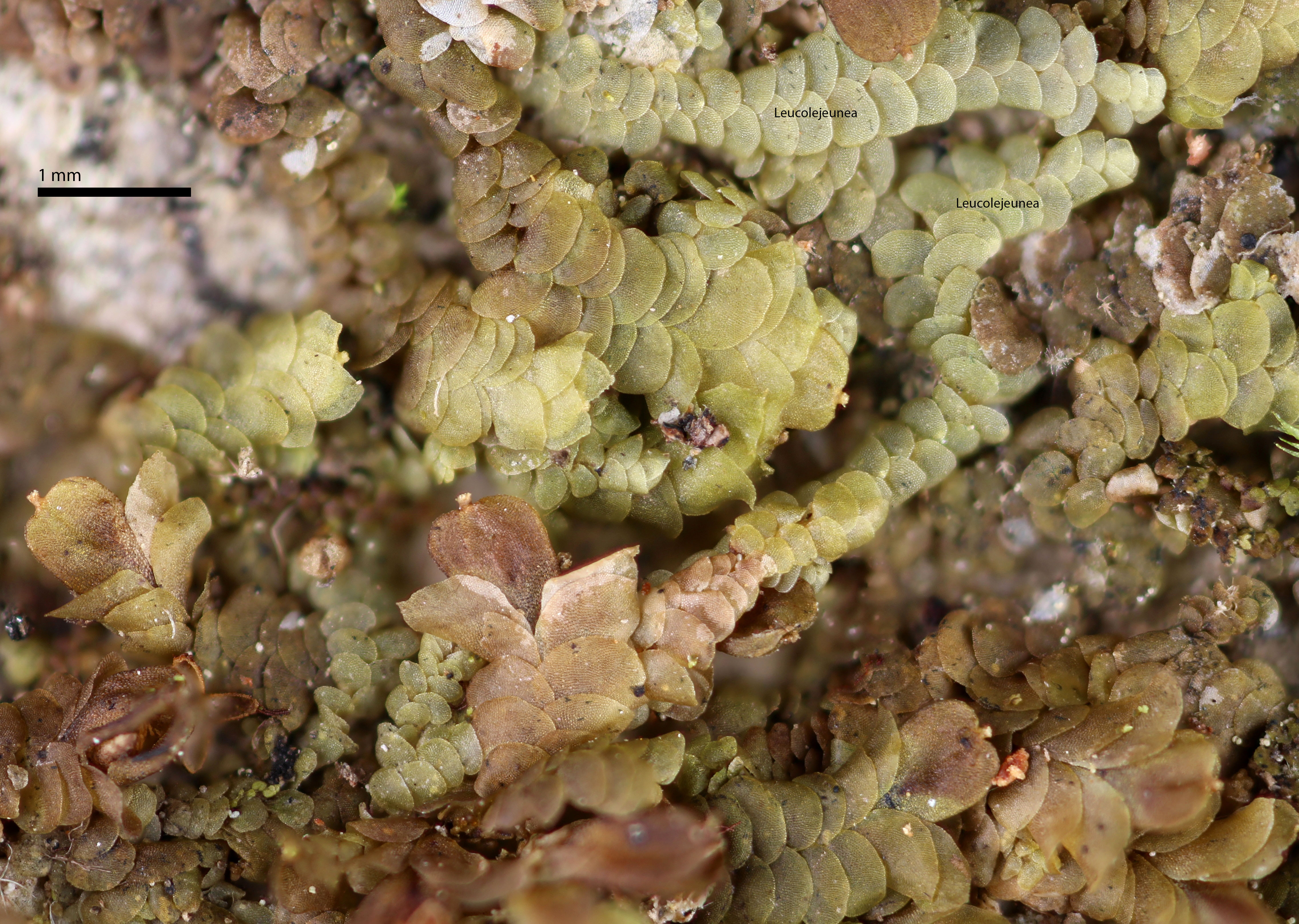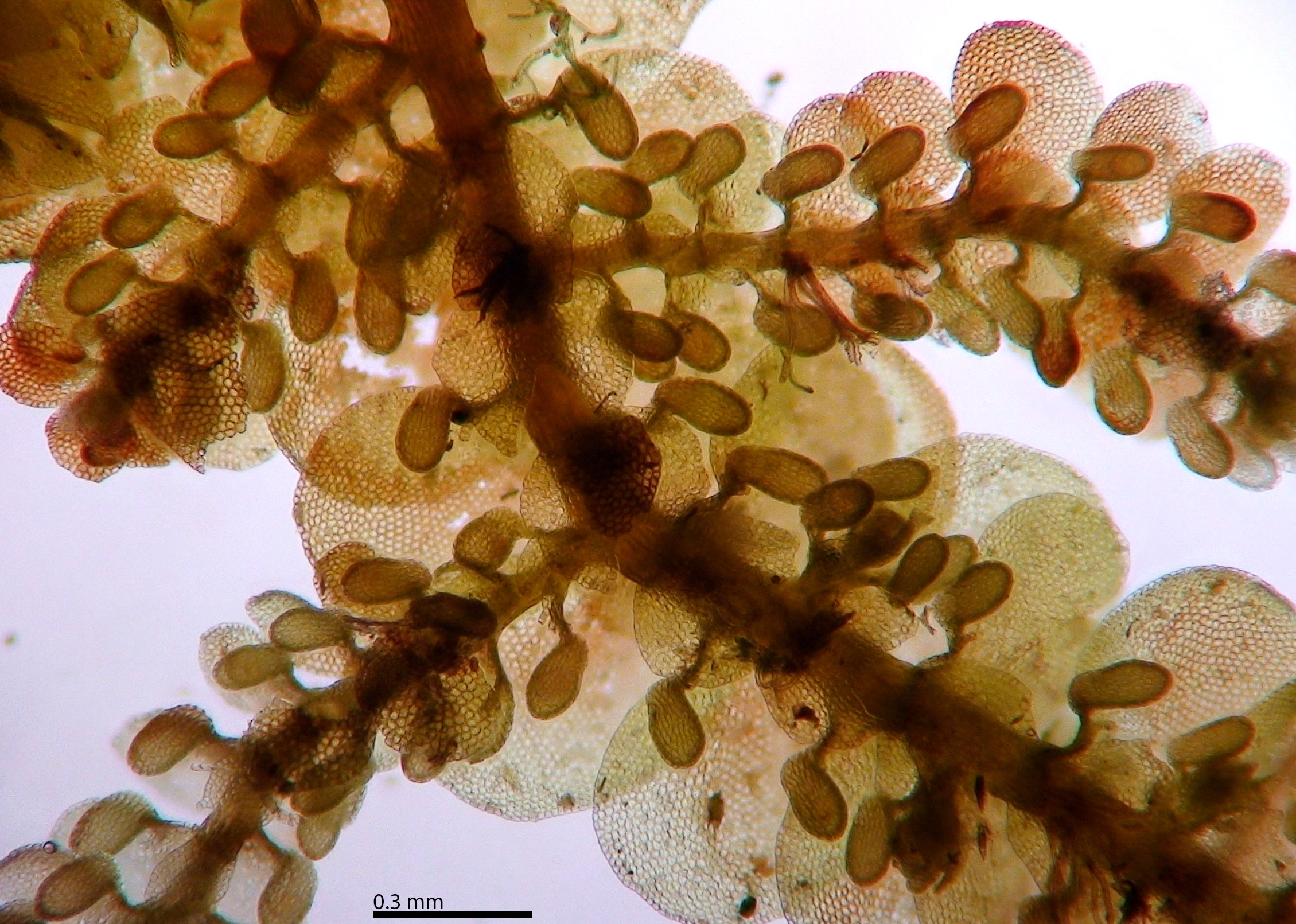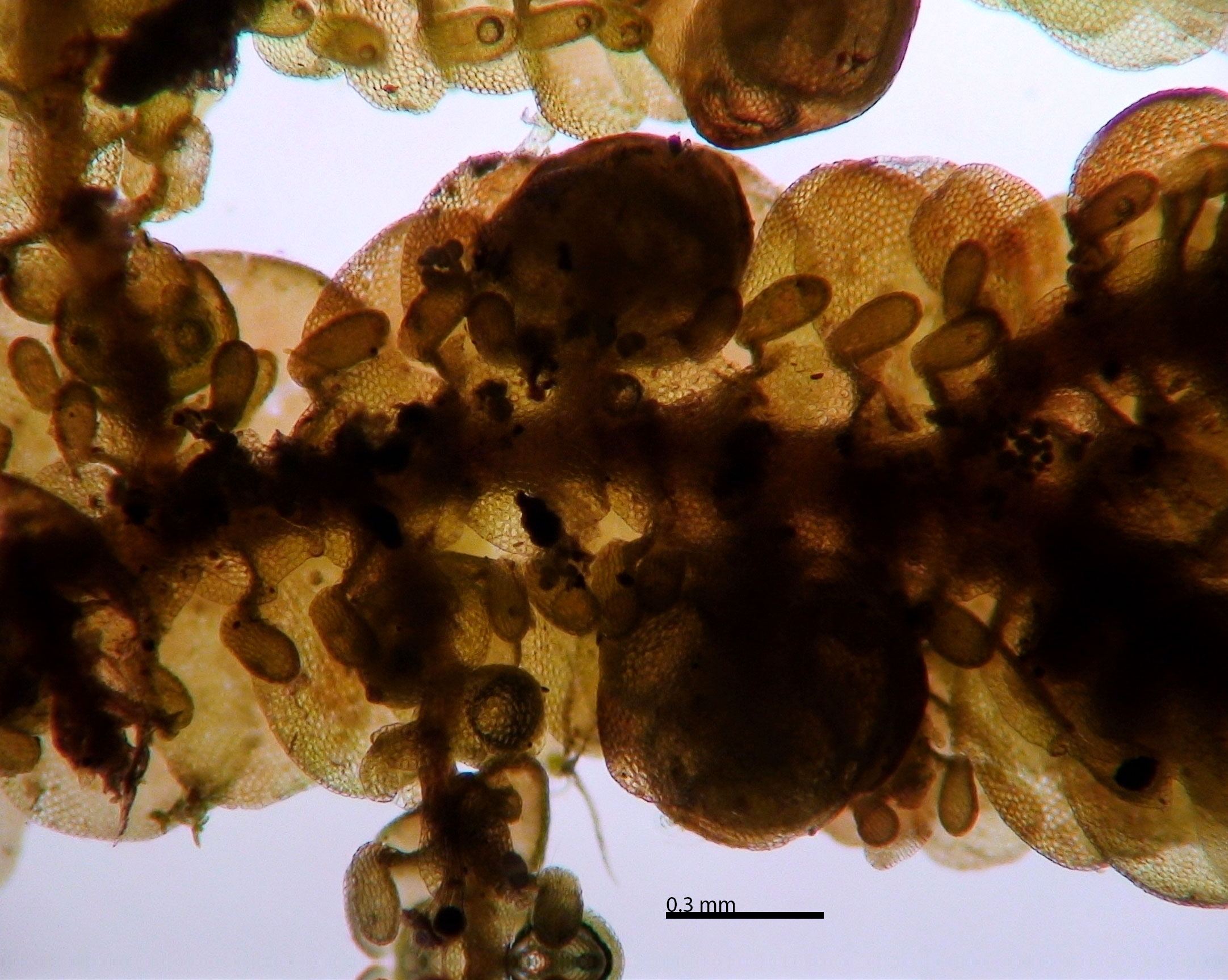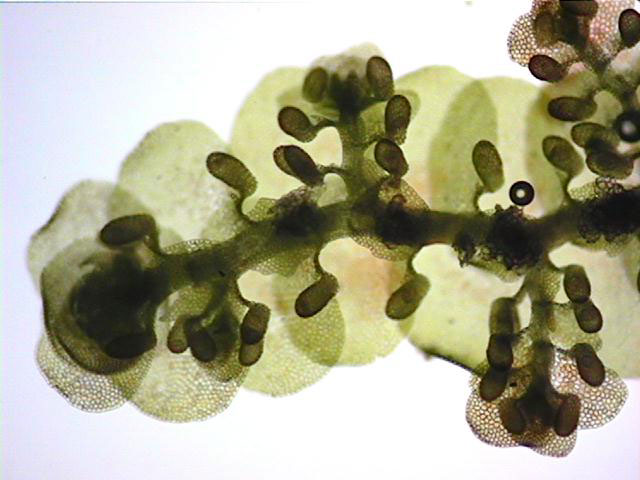Frullania caulisequa (Nees) Mont.
Family: Frullaniaceae
Synonyms
Frullania obcordata Lehm. & Lindenb.
NatureServe Conservation Status
G4G5
Distribution
Neotropical. South America, North America north to Virginia, west to Louisiana.
Habitat
In the Southern Appalachians apparently restricted to the southern Blue Ridge Escaprment Gorges at elevations of 1900-2500 ft. and occurring on bark of Acer rubrum, Alnus, Liriodendron tulipifera, Betula lenta, Tsuga canadensis, Clethra acuminata, Rhododendron maximum, R. punctatum, Ilex opaca, and Kalmia latifolia (Schuster 1992); also on leaves of R. maximum (Schuster 1959, Davison 1997). Apparently not yet known on the Tennessee side of the Blue Ridge where it is to be expected at lower elevations.
Brief Description and Tips for Identification
Shoot width: to 1-1.5 mm. Color: light brownish. Cell walls in leaf lobe: with intermediate thickenings. Dorsal lobe insertion: truncate. Lobules: always inflated, longer than wide, angled away from the stem and notably distant to the stem.
Monoicous. Perianth surface without turbercles.
As a field character, shoots are more notably appressed (flattened) to the substrate than other regional Frullania species.
Salient Features
- Wide-spreading, inflated lobules distant to and angled away from the stem
A very distinctive plant in color, habit, and lobule orientation.




